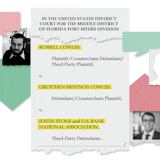Truth has become so tribal today, facts so factional, that it may be naive to hope for open-minded consideration of the riddles researchers keep wrestling with in the complex minimum-wage debate.
But the big minimum-wage hikes being pushed all across America are muscular political interventions in labor markets. Minnesota has raised its statewide minimum by roughly one-fourth since 2014 (to $9.50 for large employers), and advocates are pressing in Minneapolis and St. Paul to boost local minimums higher still, maybe to the $15 level being phased in for workers in Seattle, New York and elsewhere.
This session in the Minnesota Legislature, Republicans are trying to pre-empt such local labor market regulations, over the objections of DFLers, including Gov. Mark Dayton.
These bold economic therapies will have their most important effects, for good or ill, on people with small incomes and limited skills. And it's safe to say experts are uncertain and not agreed on what those effects may be.
So it's worth watching as researchers take advantage of the living laboratory created by the varied minimum-wage increases taking effect in localities and states these days, enabling many comparisons. The challenge is to isolate the effects of minimum-wage changes amid all the other forces — economic, social, demographic — that constantly alter incomes and employment levels between different times and different places.
Several new studies, meanwhile, point to indirect effects, apart from employment levels, through which minimum hikes might harm low-skill and low-income people.
The employment effects themselves continue to appear rather small. In a paper published in January by the National Bureau of Economic Research, Jeffrey Clemens of the University of California and Michael Strain of the American Enterprise Institute looked at the results so far of 18 state-level minimum wage increases in 2013 and 2014. They found, overall, that the hikes had "modestly held back employment among young adults and young high school dropouts."
Emphasis on "modestly." Clemens and Strain estimate that these low-skill groups saw employment rise by 1 percentage point less in states that boosted their minimums compared with states that didn't. In many cases, they write, the differences they found "are statistically indistinguishable from zero."


